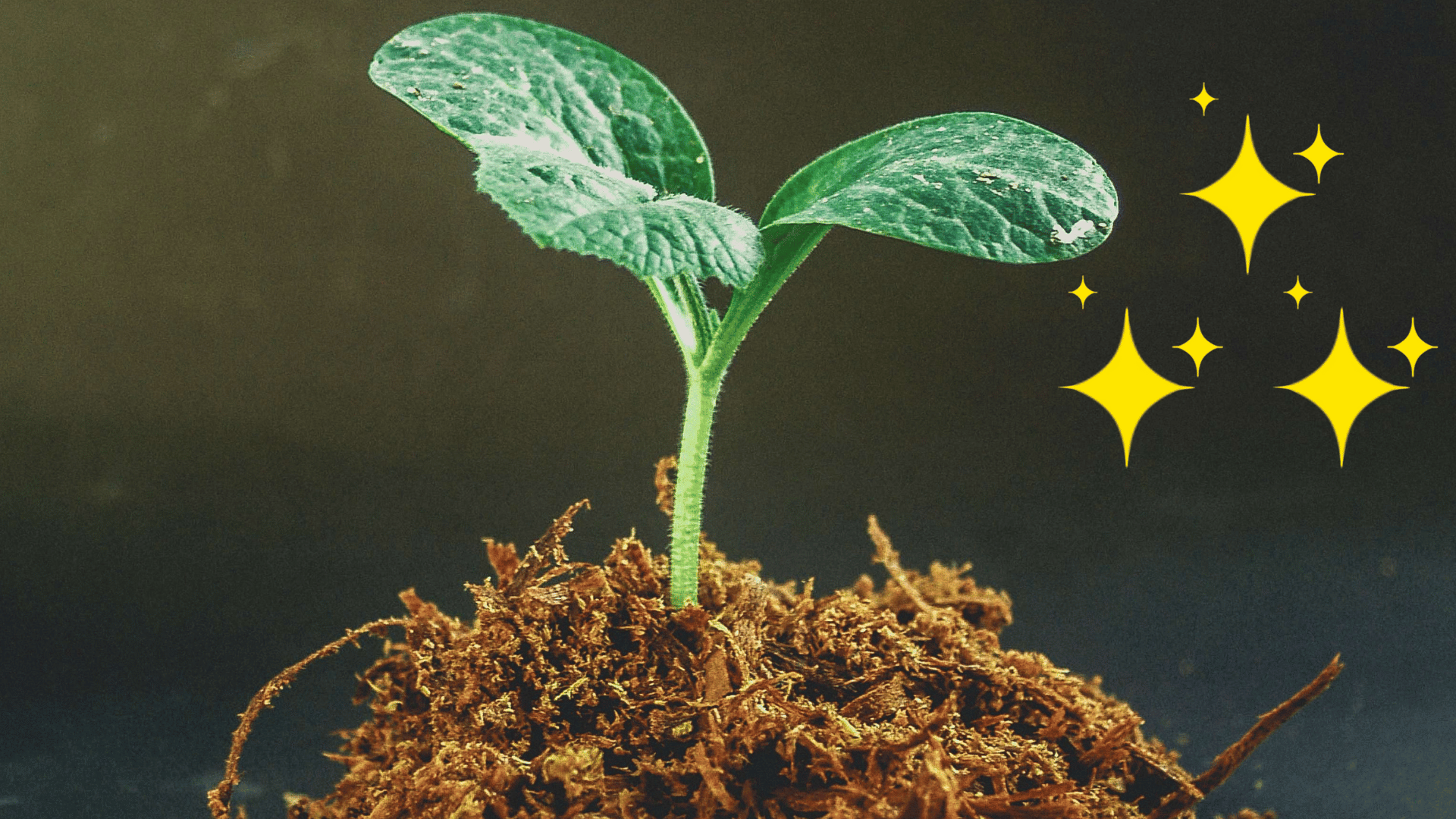We use affiliate links to run our site. When you buy through links on our site, we may earn an affiliate commission, without any added cost to you. Learn more
Ever looked at a thriving indoor garden and wondered, “How do they get such amazing results without traditional soil?” You’re not alone! Soilless growing has revolutionized how we cultivate plants indoors, allowing for greater control, fewer pests, and often more abundant harvests.
Whether you’re a curious beginner or looking to optimize your existing setup, understanding the most popular soilless mediums is your ticket to gardening success.
What Exactly Is a Soilless Growing Medium?
Think of soilless mediums as the “home base” for your plants’ roots in hydroponic, aeroponic, or other soil-free growing systems. Unlike traditional dirt, these specialized materials physically support your plants while facilitating nutrient delivery and oxygen exchange, creating the perfect environment for roots to thrive.
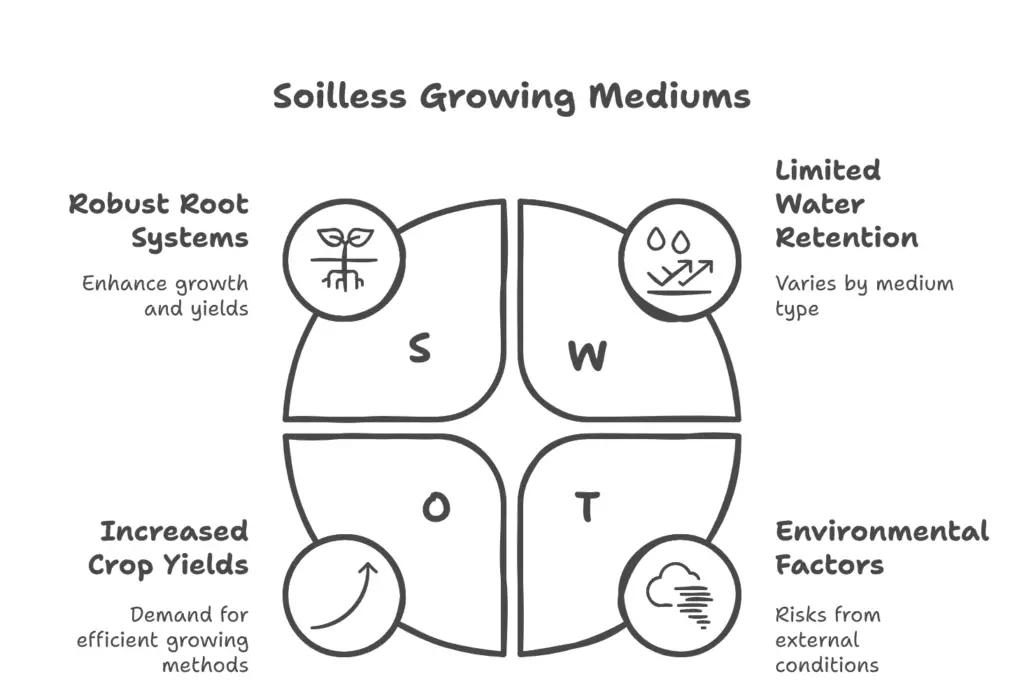
Fun fact: Plants grown in quality soilless mediums often develop more robust root systems than their soil-grown counterparts, leading to faster growth and higher yields!
Each medium has three critical characteristics you should consider before making your choice: water retention (how much moisture it holds), aeration (how much oxygen reaches the roots), and pH neutrality (to avoid interfering with your nutrient solution).
5 Best Alternative Mediums To Grow Plants
The Top Soilless Growing Mediums of 2025
Coconut Coir: The Eco-Friendly Superstar
Coconut coir has skyrocketed in popularity, and for good reason. Made from the discarded husks of the coconut industry, this medium gives a second life to what would otherwise be waste material.

Why gardeners love it:
- Excellent balance between water retention and aeration
- Naturally resistant to fungi that can harm seedlings
- pH neutral (when from a quality source)
- Environmentally sustainable alternative to peat moss
- Lightweight and easy to work with
Coco coir has one of the highest porosity rates among growing mediums, comparable to rockwool with rates in the high 90 percentiles. It simultaneously drains well while holding substantial water for your plants.
Best uses: Drip systems, wick systems, and as a component in mixed mediums. Many growers swear by a 50/50 mix of coco coir and clay pellets for optimal results.
Why it matters: A single block of compressed coco coir can expand to several times its size when hydrated, making it not only eco-friendly but economical too. Costco even sells two-packs of large compressed coco husk (marketed for reptile bedding) for around $25 that can fill two 5-gallon buckets when expanded!
Expanded Clay Pellets (LECA/Hydroton):

If you’ve seen little brown balls in someone’s houseplants, you’ve likely spotted LECA (Lightweight Expanded Clay Aggregate), often sold under brand names like Hydroton.
What makes it special:
- Created by heating clay to a whopping 2,000°F in rotary kilns
- The heating process creates porous balls that absorb and slowly release water
- Can be cleaned and reused multiple times (unlike most other mediums)
- pH neutral, adding no unexpected elements to your nutrient solution
- Provides excellent drainage and root aeration.
Best for: Ebb-and-flow systems, direct water culture, and as a drainage layer in container gardens. Many growers use LECA for semi-hydroponic houseplant cultivation with remarkable success.
Pro tip: Always rinse new LECA thoroughly before using it. That dusty residue isn’t just messy—it can clog pumps and irrigation systems if not removed!
Rockwool: The Commercial Grower’s Choice
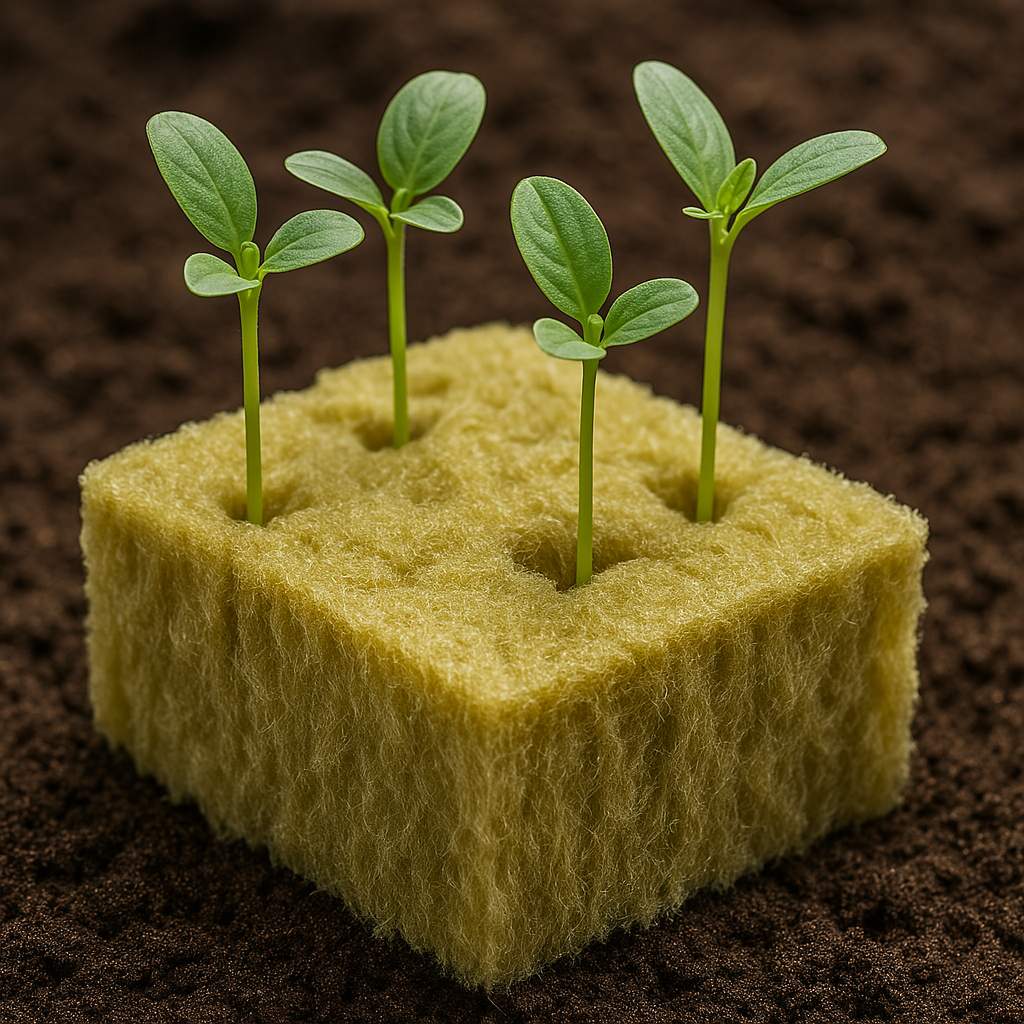
Rockwool might look like building insulation, but this fibrous material made from melted rock has been a hydroponic staple for decades.
Key benefits:
- Exceptional water retention thanks to its fibrous nature
- Versatile enough to use from seed germination through harvest
- Maintains consistent moisture levels around roots
- Widely available in various shapes and sizes for different applications.
Important considerations: Rockwool isn’t biodegradable, and fresh rockwool dust can irritate your lungs and eyes. Always wear protection when handling dry rockwool, and soak it in pH-balanced water before use.
Best applications: Commercial operations, drip systems, and propagation. Many professional growers start seeds in small rockwool cubes, then transfer them to larger blocks or slabs as they grow.
Perlite & Vermiculite: The Dynamic Duo
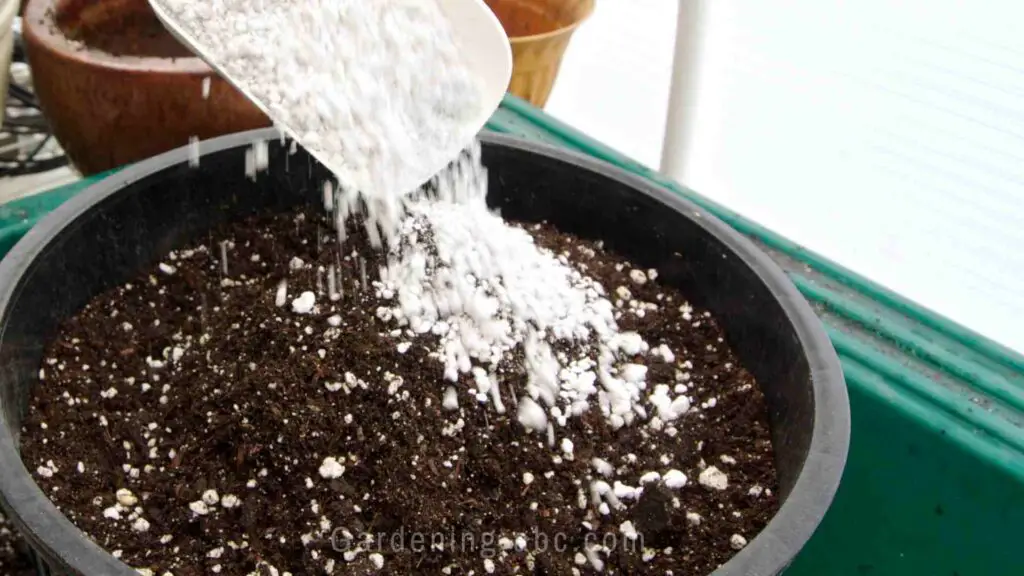
These lightweight, puffed materials often come as supporting cast members in growing medium mixes, but they deserve recognition for their unique properties.
Perlite: This volcanic glass expands when heated, creating white, popcorn-like particles that add extraordinary aeration to any growing medium.
Vermiculite: Similar to perlite but with greater water-holding capacity, vermiculite is created by heating mica until it expands into accordion-like layers.
Many growers create custom blends with these materials, adjusting the ratio to match their plants’ specific needs. A popular mix includes perlite, vermiculite, and coco coir for an optimal balance of drainage and moisture retention.
Insider tip: When using perlite, moisten it first to prevent the lightweight particles from floating to the top of your growing container during watering.
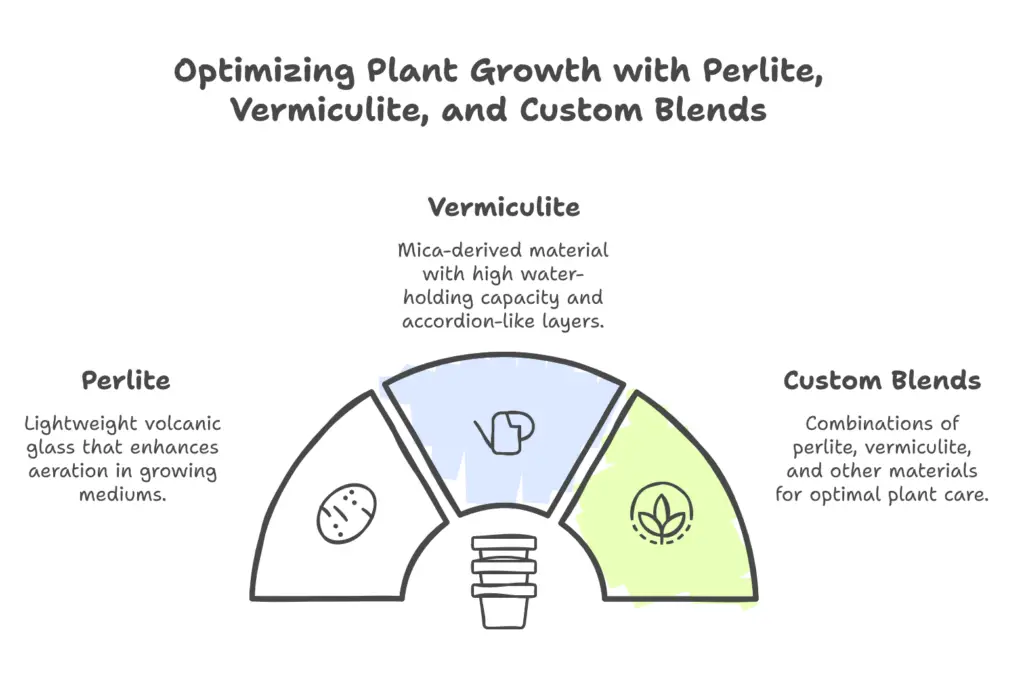
Growstones: The Sustainable Newcomer
Made from recycled glass mixed with calcium carbonate, Growstones represent the newest generation of sustainable growing mediums.
Why they’re gaining traction:
- Entirely made from recycled materials
- Lightweight despite their rock-like appearance
- Exceptional balance of water retention and aeration
- Sustainable alternative to mined materials.
Drawback to consider: Unlike clay pellets, Growstones are difficult to clean and reuse. Their extremely porous nature allows roots to grow inside them, making separation challenging.
Choosing the Right Medium for Your System
The “best” growing medium depends entirely on your specific setup and goals. Here’s a quick matchmaking guide:
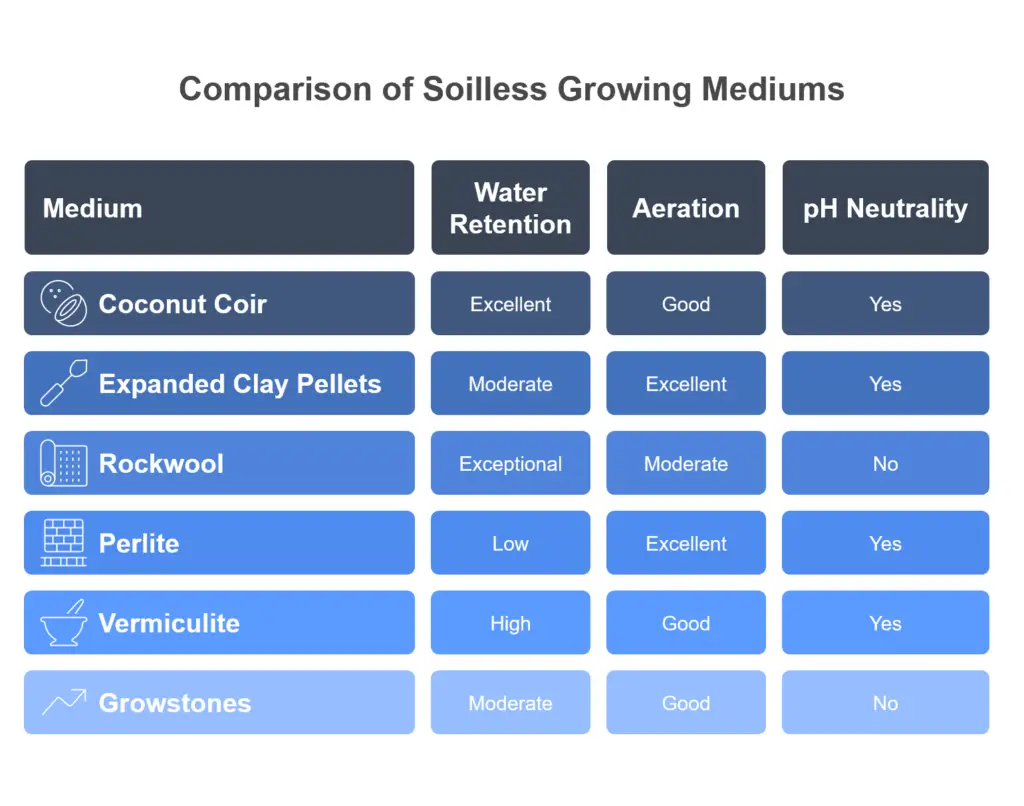
For Drip Systems:
- Top choice: Coco coir or a coco/LECA mix
- Why it works: The consistent moisture from dripping matches perfectly with coco’s excellent water distribution properties.
For Ebb and Flow Systems:
- Top choice: LECA or expanded clay pellets
- Why it works: Great drainage prevents roots from sitting in water between flood cycles.
For Deep Water Culture:
- Top choice: Net pots with LECA or growstones
- Why it works: These mediums provide stability while allowing roots to grow freely into the nutrient solution below
For Beginners:
- Top choice: Pre-mixed growing medium with coco coir and perlite
- Why it works: Forgiving water retention with enough aeration to prevent root problems
Beyond the Basics: Creating Custom Mixes
Why limit yourself to just one medium when you can combine them for superior results? Many experienced growers create custom mixes tailored to specific plants or growing conditions.
Popular Combinations:
- The Balanced Blend: 50% coco coir + 50% LECA = excellent water retention with improved drainage
- The Houseplant Mix: Coco coir + perlite + charcoal = lightweight with optimal moisture levels for indoor plants
- The Propagation Mix: Fine perlite + vermiculite = ideal for rooting cuttings.
Think of medium mixing like creating the perfect soil recipe—each ingredient brings something valuable to the table!
Making the Sustainable Choice
With environmental concerns growing each year, many gardeners are prioritizing sustainability in their medium choices. If that’s important to you, consider:
- Coco coir: Made from coconut industry byproducts that would otherwise be waste
- Growstones: Created from recycled glass
- Biochar: Carbon-negative option that improves growing conditions
- Reusable options: LECA can be cleaned and reused for years.
Peat moss, while popular in traditional potting mixes, raises environmental concerns due to the slow regeneration of peat bogs, making coco coir an increasingly popular alternative.
Key Takeaways Before You Buy
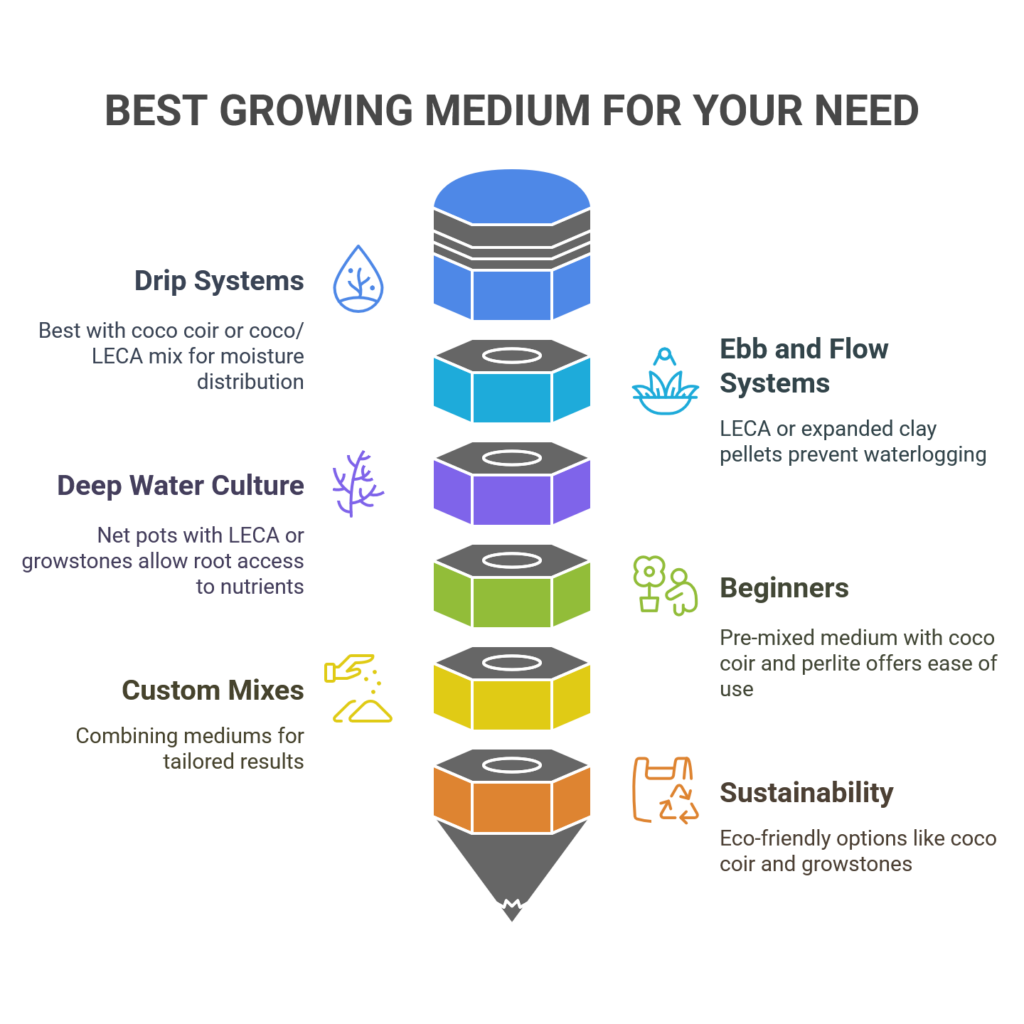
Before you click “purchase” on your new growing medium, consider these important factors:
- Your growing system: Different systems (ebb and flow, drip, deep water culture) work better with certain mediums
- Plant needs: Some plants prefer more aeration, others more moisture
- Experience level: Some mediums are more forgiving for beginners
- Budget: Consider both initial cost and reusability
- Space constraints: Some mediums are significantly heavier than others when saturated
Finding Your Perfect Match
The world of soilless growing mediums offers something for every gardener, from the apartment-dwelling houseplant enthusiast to the serious hydroponic vegetable grower. The key is understanding the properties of each medium and matching them to your specific growing conditions and plant needs.
Remember that experimentation is part of the journey—many experienced growers try different mediums before finding their perfect match. Don’t be afraid to start small, test different options, and see what works best for your unique situation.
P.S. Bonus Tip: Want to test different growing mediums without committing to large quantities? Many hydroponic supply stores sell sample packs with small amounts of various mediums. This allows you to experiment before investing in bulk amounts—the perfect way to discover your growing medium soulmate without breaking the bank!
Amazon and the Amazon logo are trademarks of Amazon.com, Inc, or its affiliates.

Hi there! My name is Prasenjit and I’m an avid gardener and someone who has grown a passion for growing plants. From my hands-on experience, I have learned what works and what doesn’t. Here I share everything I have learned.
